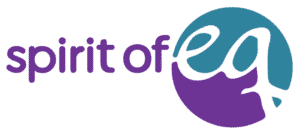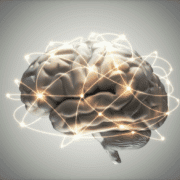Connecting Emotional Intelligence and the Enneagram
Connecting Emotional Intelligence and the Enneagram: A Pathway to Non-Violence
In this world increasingly marked by conflict and misunderstanding, the need for effective communication and emotional understanding has never been more critical for all of us. Two of the powerful tools I have been talking about that can facilitate this understanding are Emotional Intelligence (EI) and the Enneagram. While they originate from different frameworks, their way of intersecting offers profound insights with our human behavior, enhancing self-awareness and empathy—two essential components of emotional intelligence. Today’s blog post explores how these tools complement each other in promoting non-violence, providing real-life examples and case studies to illustrate their application in resolving conflicts and fostering harmonious relationships.
Understanding Emotional Intelligence
Emotional Intelligence refers to the ability to recognize, understand, and manage our own emotions while also being able to recognize, understand, and influence the emotions of others. Daniel Goleman and Josh Freedman, pioneers in the field, Daniel identifies five key components of EI: self-awareness, self-regulation, motivation, empathy, and social skills, while Josh identifies (my favorite) Know, Choose, Give. These components are crucial in navigating interpersonal relationships and resolving conflicts peacefully.
The Enneagram: A Tool for Self-Discovery
The Enneagram is a personality typing system that categorizes human behavior into nine distinct types, each with its own motivations, fears, and coping mechanisms. Understanding one’s Enneagram type can significantly enhance self-awareness, as it provides insights into our core motivations and emotional triggers. This self-awareness is the first step toward developing emotional intelligence.The Nine Enneagram Types
1. Type One: The Reformer – Principled, purposeful, and self-controlled.
2.Type Two: The Helper – Generous, people-pleasing, and possessive.
3. Type Three: The Achiever – Adaptable, driven, and image-conscious.
4. Type Four: The Individualist – Sensitive, introspective, and self-absorbed.
5. Type Five: The Investigator – Perceptive, innovative, and secretive.
6. Type Six: The Loyalist – Committed, security-oriented, and anxious.
7. Type Seven: The Enthusiast – Spontaneous, versatile, and scattered.
8. Type Eight: The Challenger – Self-confident, decisive, and confrontational.
9. Type Nine: The Peacemaker- Receptive, reassuring, and complacent.
The Intersection of EI and the Enneagram
Enhancing Self-Awareness
Understanding one’s Enneagram type can significantly enhance self-awareness, a foundational element of emotional intelligence. For instance, a Type One (Reformer) may recognize their tendency toward perfectionism and how it can lead to frustration and conflict with others. By acknowledging this trait, they can work on self-regulation, learning to manage their expectations and communicate more effectively with those around them.
Fostering Empathy
Empathy, another critical component of emotional intelligence, can also be deepened through the lens of the Enneagram. For example, a Type Two (Helper) may struggle with setting boundaries, often leading to feelings of resentment. By understanding their type, they can better empathize with others’ needs and learn to communicate their own more effectively. This understanding fosters healthier relationships and reduces the likelihood of conflict.
Case Studies: Real-Life Applications
Case Study 1: Workplace Conflict Resolution
In a corporate setting, a team comprised of various Enneagram types faced significant conflict due to differing communication styles. A Type Eight (Challenger) was often perceived as aggressive, while a Type Nine (Peacemaker) felt overwhelmed and silenced. By facilitating a workshop on the Enneagram and emotional intelligence, team members gained insights into each other’s motivations and fears. The Type Eight learned to temper their assertiveness with empathy, while the Type Nine found their voice, leading to improved collaboration and a more harmonious work environment.
Case Study 2: Family Dynamics
In a family struggling with communication, a Type Four (Individualist) often felt misunderstood, leading to emotional outbursts. By exploring the Enneagram together, family members learned to appreciate the Type Four’s depth of feeling and creativity. The Type Four, in turn, gained insights into their emotional triggers and learned to express their needs more clearly. This mutual understanding fostered empathy and reduced conflict, promoting a more peaceful family dynamic.
Encouraging Non-Violent Interactions
The insights gained from understanding one’s Enneagram type can inform emotional responses and interactions with others. For instance, a Type Six (Loyalist) may recognize their tendency to become anxious in uncertain situations. By acknowledging this, they can practice self-regulation techniques, such as deep breathing or seeking support from others, rather than reacting defensively. This awareness not only helps them manage their emotions but also promotes non-violent communication with those around them.
Practical Steps for our readers
1. Identify Your Enneagram Type: Take an Enneagram assessment to understand your core motivations and emotional triggers.
2. Reflect on Your Emotions: Consider how your type influences your emotional responses in various situations.
3. Practice Empathy: Engage in active listening and try to understand the perspectives of others, especially those with different Enneagram types.
4. Communicate Openly: Use “I” statements to express your feelings and needs without placing blame on others.
5. Seek Feedback: Encourage open dialogue with friends, family, or colleagues about how your behavior affects them.
Conclusion
The integration of Emotional Intelligence and the Enneagram offers a powerful framework for promoting non-violence in our interactions. By enhancing self-awareness and empathy, individuals can navigate conflicts more effectively and foster harmonious relationships. As we deepen our understanding of ourselves and others through these tools, we pave the way for a more compassionate and peaceful world. Embracing the insights gained from the Enneagram can lead to transformative changes in how we respond to our emotions and interact with those around us, reinforcing the vital connection between self-understanding and non-violent behavior and my goal is to continue to give you thoughts and ideas to help on the journey of intergration.
Peace and every good to you.




Leave a Reply
Want to join the discussion?Feel free to contribute!